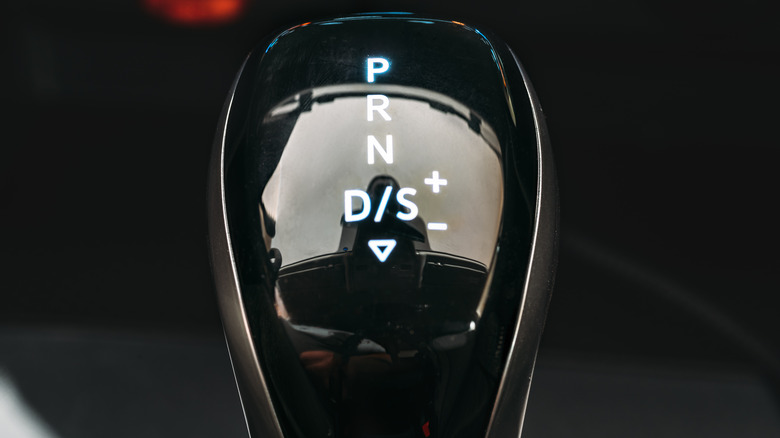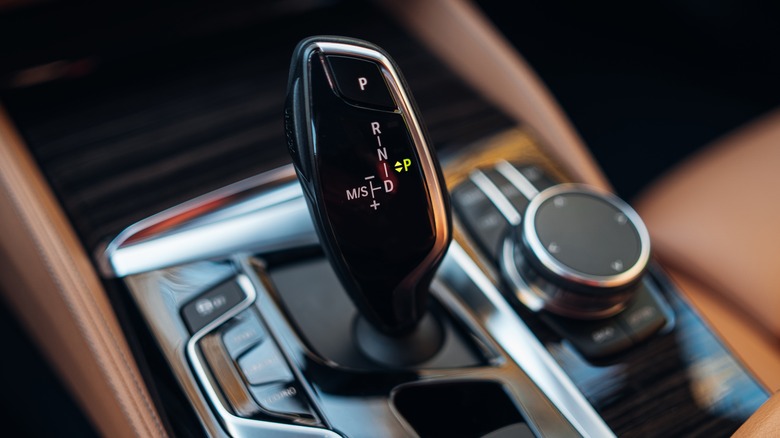How Does Manual Mode Actually Work In An Automatic Car?
If you've ever glanced at the stick shift in your automatic transmission car, the meanings of the various settings are pretty obvious. D is Drive, R is Reverse, P is Park, and N is Neutral. However, many automatic shifters also have a mysterious pair of plus and minus signs, usually near the D or N settings and perhaps accompanied by an M or S symbol. What could these signs mean? Even though stick shifts are a dying breed, those plus and minus signs are your means of swapping from your regular automatic transmission to a fully manual mode. The M stands for Manual, while the S stands for Sport mode, which means the same thing, pretty much.
If you didn't know what the plus and minus signs meant, that's probably because you've never needed to use them. Why would you pay any mind to a manual mode if you're using an automatic transmission, after all? But if you've ever been curious about driving a manual transmission car, even just casually, those special settings can give you a taste of the kind of fine-tuned control that a manual transmission brings. Just make sure you actually know how to use it beforehand.
Using the manual settings
You know how a manual shifter's gear settings are numbered, and you're supposed to shift into a higher subsequent gear as your car increases in speed? The manual mode on your automatic shifter works the same way, albeit with a much simpler interface. Rather than manually selecting which gear you want to shift into, you just tilt the shift stick toward the plus or minus symbols to shift up or down. For example, if you were in first gear and needed to get up to third gear on a speedy highway, you would tilt the shifter up to the plus sign twice to shift into third. By that same token, if the highway is getting congested and you need to slow down, you would tilt the stick twice toward the minus sign to shift back to first.
The cool thing about this expedited setup is that it's a little simpler to use than a manual shifter. There's no clutch you have to press in, there are fewer shifter positions you need to internalize, and if you ever get tired of all the shifting, you can switch back to regular drive mode at any time.
Manual mode limitations
While the manual mode in an automatic car is fairly simple to operate, especially compared to a real manual shifter, you should remember that it's not exactly the same as a traditional manual setup. Unlike a regular manual shifter, shifting into a higher gear in manual mode doesn't force the car to use that gear exclusively. For example, if you're in third gear but start slowing down, your car may automatically switch to a lower gear even if you don't physically shift it. Manual modes just cap the gearbox at a set gear rather than keeping it in that gear, so if you're used to finer control, it can be a bit disorienting.
Using manual mode can also mess with your car's established parameters a bit. For instance, your car's gas mileage may be worse in manual mode at high gear than it would be in automatic drive since you're pushing the engine harder than it would normally go. That increase in dynamism may also put extra strain on the engine and gearbox, which means more frequent mechanic visits.
Manual mode is a fun way to try a more active driving style, but at least in automatic cars, it's better used as an occasional novelty rather than a default setting.


